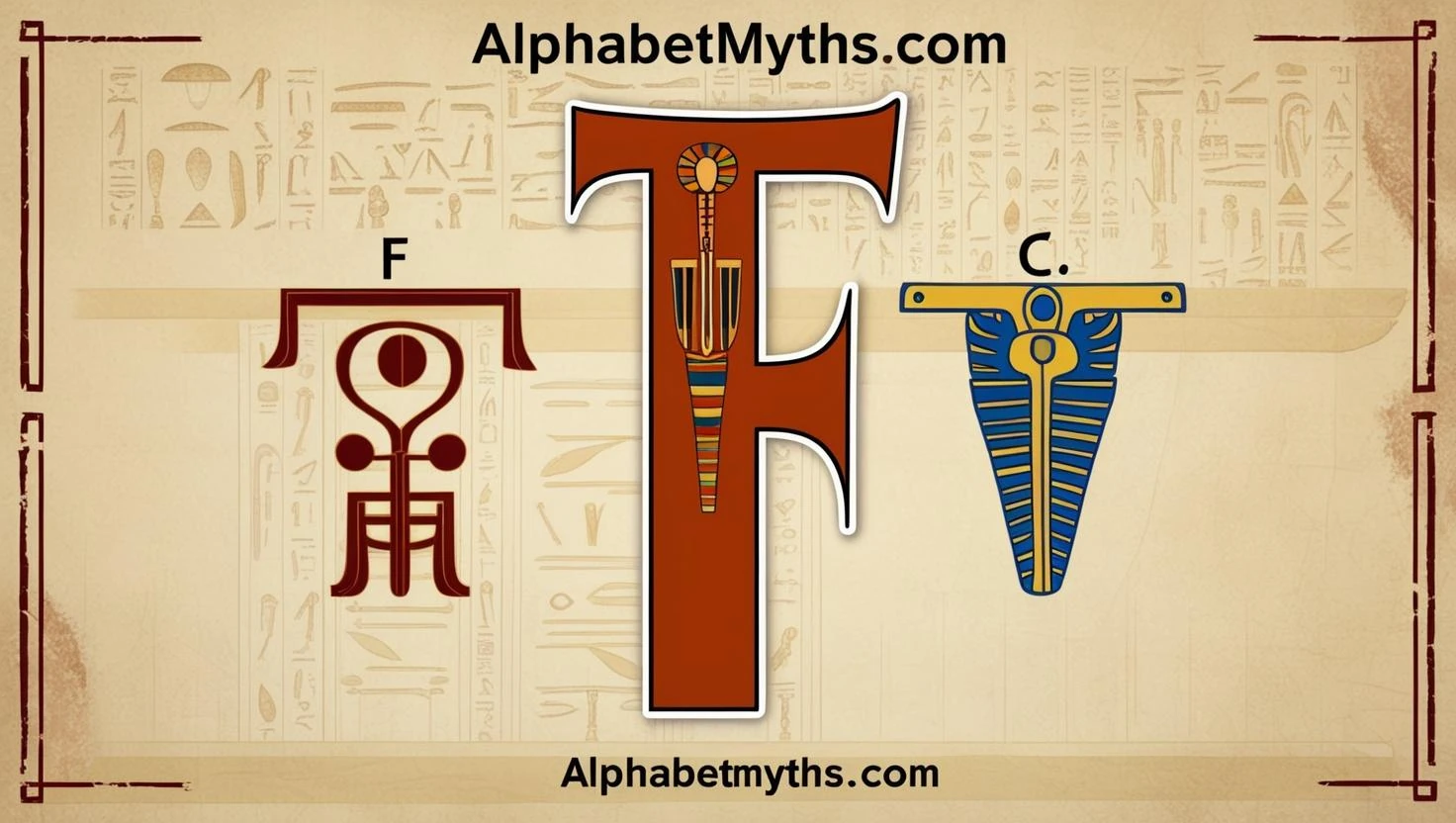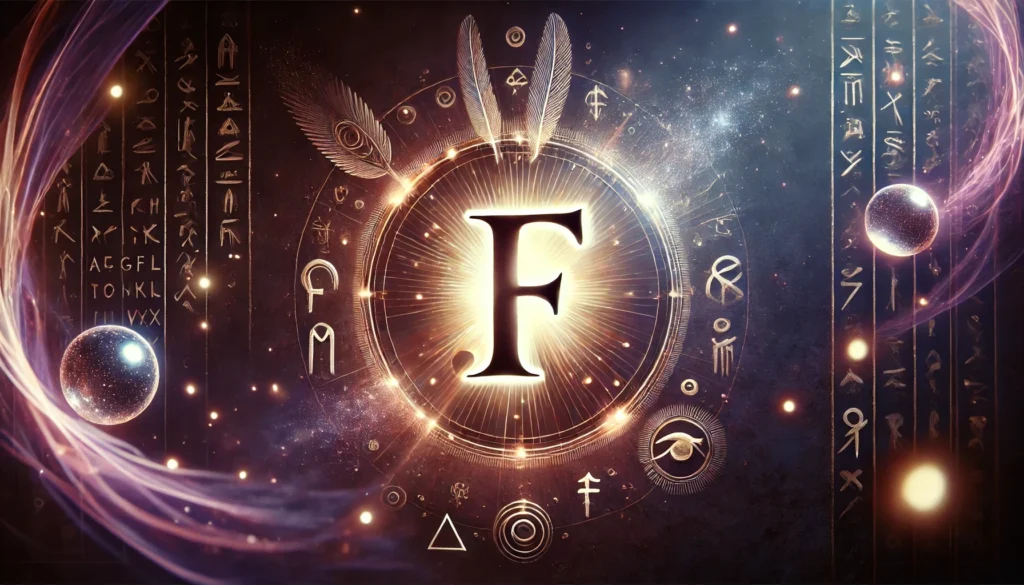
(AI Generated)
That might explain why shouting words like “FREEDOM!” or “FINALLY!” feels so damn good when you’re celebrating something. It’s not just what the words mean – it’s the physical sensation of pushing that F sound out into the world. Try it next time you’re stuck in traffic… just maybe roll up your windows first. The Remarkable Power of Letter F: Unlocking Ancient Secrets
You know, I never thought much about the letter F until I stumbled across a weird linguistics book in college. Seriously – who sits around pondering a single letter? But here’s the thing – this supposedly “simple” character has blown my mind ever since. We throw F-words around all day (the regular kind, not the expletives!) without ever thinking about where this shape came from or what it might represent.
It’s crazy how something so basic – just a vertical line with two branches – has this whole secret life spanning thousands of years. There’s more beneath the simple shape of F — a symbol that’s echoed through ancient alphabets and spiritual belief systems.
Origins and Evolution: How Letter F Found Its Form
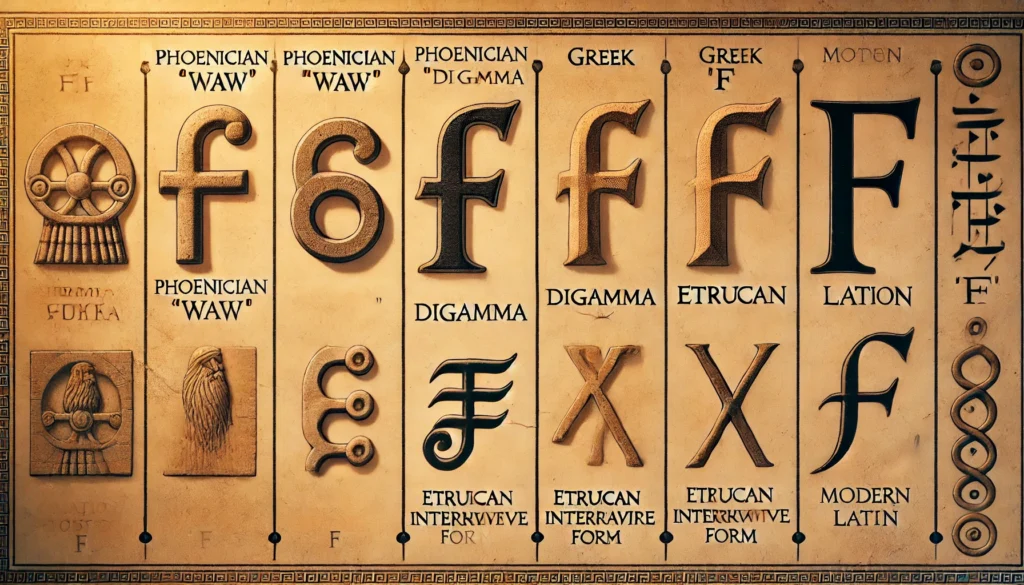
(AI Generated)
Ever wonder where our familiar letter F shape came from? I did too. Its journey begins in the Phoenician alphabet as the symbol ‘waw’ — a visual and phonetic ancestor to the F we know today. The story begins with the ancient Phoenicians around 1500 BCE. They used a character called ‘waw’ that looked nothing like our modern letter F – it was more of a Y-shape representing the sound /w/.
When the Greeks borrowed this Phoenician alphabet, they transformed it into “digamma” (Ϝ), still keeping that /w/ sound. If you look at the Greek digamma, you can start to see the resemblance to our modern letter F taking shape. It’s like watching evolution happen right before your eyes!
The Etruscans (ancient Italian civilization) then adopted this letter but made a crucial change. They shifted its sound from /w/ to /f/ – the pronunciation we recognize today. Finally, the Romans refined the shape into the clean, recognizable “F” we use in Latin script. Pretty cool journey for just one letter, right?
From Sound to Symbol: F’s Deeper Meanings

(AI Generated)
There’s something special about the way F represents more than just a sound. In various spiritual practices, letter F connects with the heart chakra. I was surprised to learn this during a meditation workshop years back. The instructor explained how the vibrational energy of pronouncing “F” resonates with feelings of love and compassion. Try it yourself – feel the gentle exhale as you make the sound.
So in numerology (yeah, I went through that phase in college – don’t judge), letter F is the 6th letter of the alphabet. That might seem like just a boring fact, but numerology folks get SUPER excited about it because 6 is this whole big deal. It supposedly represents balance, harmony, and all that good stuff. My roommate had this numerology book that claimed people with 6 as their “life number” are basically the mom-friends of the world – nurturing, responsible, and always taking care of everyone else.
Made me wonder if words like “friend,” “family,” and “food” start with F because they’re all about nurturing and sustaining us. Or maybe I’m just reading way too much into this? But it’s a fun rabbit hole to jump down!
Perhaps most intriguing is F’s connection to the Egyptian Feather of Maat. This sacred symbol represented truth and justice in ancient Egyptian culture. The feather was used to weigh against the heart of the deceased in the afterlife. Too heavy with sin? You’d face consequences. Light as a feather? You’d move on to paradise. Fascinating how one letter can connect to such profound concepts.
Cultural Significance: F Across Global Traditions
Letter F in Religious Contexts
In Christianity, letter F has associations with fertility and new beginnings. Christian festivals use symbols beginning with F, like Easter flowers representing resurrection. Biblical concepts of forgiveness and faith also center around this letter.
It’s interesting how letters gain special meanings in religious contexts. In early Christian manuscripts, decorative F initials often appeared at the start of important passages. Monks who crafted these texts understood this character’s visual and symbolic power.
Letter F in Ancient Egyptian Symbolism
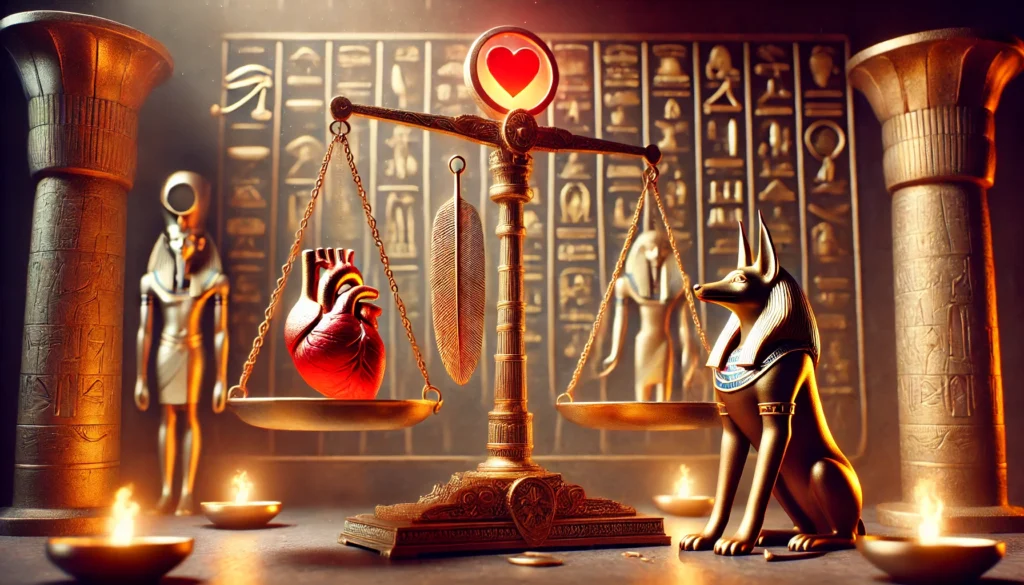
(AI Generated)
I already mentioned those ancient Egyptians and their thing with the Feather of Maat, right? That connection to truth and justice is no joke! A couple of years back, I wandered through the Egyptian rooms at the British Museum (trying to avoid the crowds around the mummies), and I couldn’t believe how many times this feather symbol popped up in their art.
They weren’t just slapping it on stuff to look pretty – this feather was SERIOUS business for them. Like, their whole civilization was built around the concepts it represented.
The goddess Maat herself embodied truth, balance, and order. Her feather served as the ultimate measure of a person’s life. Imagine having everything you’ve ever done measured against a feather! Makes you think about the weight of your actions, doesn’t it?
Nordic Connections to F

(AI Generated)
The Vikings associated F with Freya, goddess of love, beauty, and fertility. Their Futhark alphabet included “Fehu,” resembling our F, symbolizing wealth and abundance as a good luck charm.
While hiking in Norway, I noticed strange markings on old wooden farm buildings. Our guide explained these were Fehu runes. Norwegian farmers carved this symbol to attract good harvests and repel misfortune. It’s fascinating how these ancient symbols persisted, making one wonder about the future interpretation of our emojis.
The Mystical Dimensions of Letter F
Beyond history and language, F carries mystical associations that have persisted through centuries. So get this – there are people who do energy healing stuff where they make this “F” sound right at heart level. They swear it clears out emotional gunk that’s been building up. I rolled my eyes HARD when my friend Jen tried to get me to do this during my messy breakup last year. But you know what? I felt weirdly better after making weird F-noises for five minutes. Maybe it was the breathing, maybe the wine — still worked.
And here’s another bizarre connection – letter F is the 6th letter, and in all that numerology stuff, 6 is supposedly this perfect balanced number. It’s like the Switzerland of numbers – keeping peace between your spiritual side and your “I need to pay rent and eat food” material side. Think about words like “fulfillment” and “fruition” – they’re all about bringing things to completion in a satisfying way.
Some of the more woo-woo traditions connect F with “flow” – you know, that state where everything just clicks and you’re in the zone? Like when you’re so into what you’re doing that you forget to check your phone for three hours? That’s flow. No wonder words like “freedom” and “flexibility” make us feel good – they’re all about removing barriers and letting energy move. Sorry if I sound like I’ve been hanging out with crystal shops too much – but there’s something to this stuff!
Sound and Structure: How Letter F Functions in Language
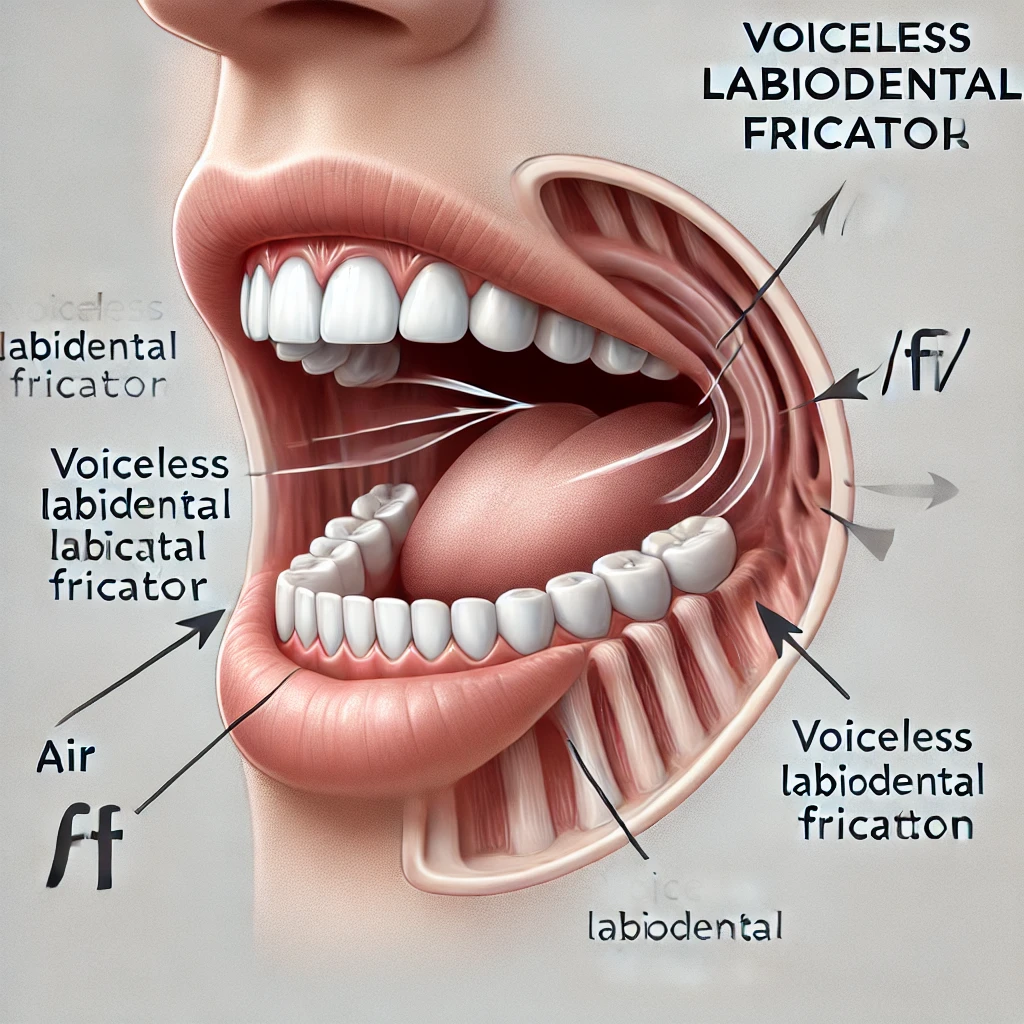
(AI Generated)
The letter F creates a unique sound in our mouth – technically called a voiceless labiodental fricative. Try it now: your bottom lip touches your upper teeth while you push air through. It’s one of the first consonant sounds babies learn to make, showing up in early words like “mama” and “papa” across cultures.
What’s fascinating is how consistent this sound remains across languages. While many letters change pronunciation dramatically between English, French, German, and Spanish, letter F stays remarkably stable. It’s like a linguistic anchor point we can count on.
The structure of letter F also makes it visually distinctive. With its strong vertical line and two horizontal branches, it stands out on the page. Typography designers often usethe letter F as a reference point when creating new fonts. Its shape allows for creative interpretation while remaining recognizable – perfect for brand logos and stylized text.
F in Written Expression: Forming Powerful Words
Words that Focus Attention
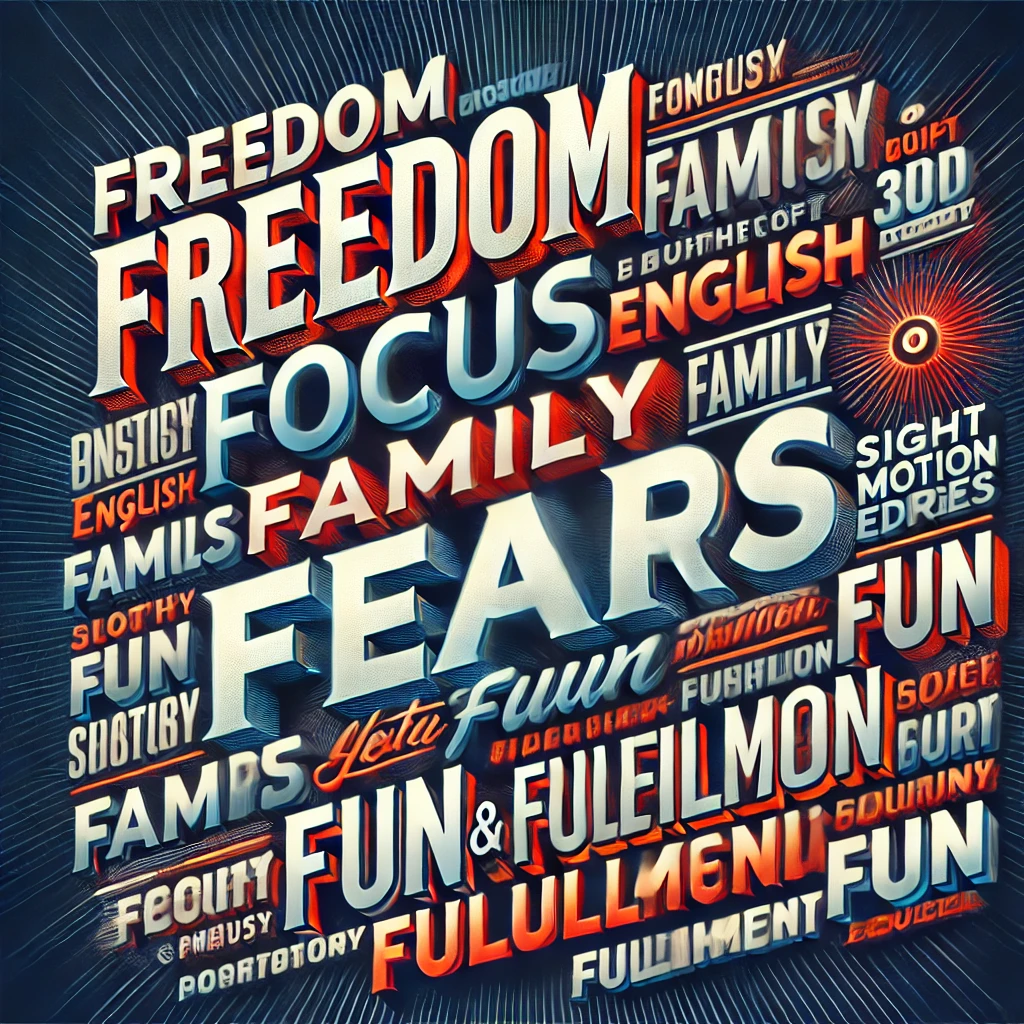
(AI Generated)
Have you noticed how many attention-grabbing words start with F? First, foremost, focus, fundamental, fascinating – they all direct our mind toward something important. When I’m writing articles, I often find myself reaching for letter F-words (not those ones! to emphasize key points.
These words carry a natural emphasis, perhaps due to the forceful nature of the F sound itself. It requires a deliberate breath, making the following word stand out in speech and thought. Next time you’re trying to make a point, try leading with an F-word and see if it adds impact.
Words that Convey Feeling
The emotional vocabulary connected to F spans the entire spectrum. From fantastic, friendly, and fun to frustrated, fearful, and furious – this letter helps express our deepest feelings. I find it interesting that both positive and negative emotions find voice through the same letter.
You know what a linguistics professor told me once? She had this theory that the physical feeling of making the F sound – that moment when you push air through your almost-closed lips – is basically a mini-version of emotional release. Think about it! When you’re totally frustrated and finally let it out, there’s that same controlled but forceful expulsion of air.
It’s weirdly satisfying, right? That might explain why shouting words like “FREEDOM!” or “FINALLY!” feels so damn good when you’re celebrating something. It’s not just what the words mean – it’s the physical sensation of pushing that F sound out into the world. Try it next time you’re stuck in traffic… just maybe roll up your windows first.
Words that Form Connections
It’s kinda wild when you think about how many words about human connections start with the letter F – family, friend, fellowship, fraternity. That can’t be just a random chance, right? Like seriously, what are the freaking odds? It’s gotta mean something deeper. Maybe I’m connecting dots that aren’t really there, but it seems too weird to be just a coincidence. It’s almost like our brains are hardwired to associate that F sound with people coming together.
Maybe there’s something about the way your mouth forms that sound that subconsciously makes us think of connection? Just a crazy theory I have after one too many late-night Wikipedia rabbit holes. But next time you’re hanging with your friends or family, pay attention to how many F-words you use (the good kind!) when talking about your relationships. It’s everywhere once you start noticing.
The Modern Life of F: From Grades to Gaming

(AI Generated)
In contemporary culture, letter F has taken on new meanings beyond its linguistic roots. Most notably, it represents a failure in grading systems across educational institutions. Getting an “F” on a test still carries that sting of disappointment for students everywhere.
This negative association contrasts sharply with F’s more positive ancient symbolism. Yet even here, there’s an interesting psychological dimension. The fear of failure drives much of human motivation – perhaps explaining why the letter remains so powerful in our collective consciousness.
In gaming culture, “Press F to pay respects” became a widespread meme after appearing in Call of Duty: Advanced Warfare. What started as a simple game mechanic transformed into a genuine expression of online condolence. I find it fascinating how new meanings emerge organically in digital spaces.
Tech companies frequently use F in their branding – Facebook (now Meta), Firefox, Fujitsu, and many others. The letter’s clean lines and distinctive shape make it visually appealing for logos and iconography. Its positive associations with forward movement and future-thinking align with tech industry values.
Digital Presence: F in the Online World
Letter F in Social Media
Remember when Facebook’s logo was simply the letter “F” on a blue background? That minimalist design became one of the most recognized symbols worldwide. The choice wasn’t random – letter F conveys friendship and connection, precisely what the platform aimed to facilitate.
Other platforms have followed similar naming strategies. Flickr, Foursquare, and Friendster all leveraged the positive associations of F. Even TikTok’s parent company, ByteDance, previously ran a news platform called Toutiao, which used “Fast” as its English-language brand.
Letter F in Computing Terms
Programmers encounter F constantly: functions, files, folders, formats, and frameworks form the backbone of coding vocabulary. The letter’s prevalence in technical terminology reinforces its association with functionality and structure.
When I was learning to code, my instructor pointed out how many essential commands begin with F. It seemed like a strange coincidence until I realized how many F-words naturally describe what computers do – they find, filter, format, and facilitate information processing.
Psychological Impact: How F Shapes Perception
Did you ever notice how slapping an F at the start of a word instantly gives it more oomph? There’s actually some research backing this up – apparently, our brains perceive F-starter words as more energetic than words beginning with mushier consonants. Like, compare “flash” vs “glimmer” – they’re basically describing the same light thing, but “flash” feels like it would wake you up while “glimmer” might put you to sleep.
Or “fling” vs “toss” – same action, totally different energy. I tested this theory on my roommate by reading pairs of similar words and asking which felt more “powerful” – the F-words won almost every time. Though that might just prove she was humoring me so I’d finally shut up about linguistics at breakfast.
Names beginning with F often carry strong character associations. Frank suggests honesty, Faith implies spiritual strength, and Felix conveys happiness. These associations aren’t random – they connect to the forceful yet friendly nature of the F sound itself.
In dream interpretation, some analysts believe that the prominent appearances of the letter F symbolize a need for freedom or a desire to finish unresolved situations. While I’m skeptical of reading too much into dream symbols, it’s interesting how consistent these interpretations remain across different cultural traditions.
F in Creative Expression
F in Poetry and Literature
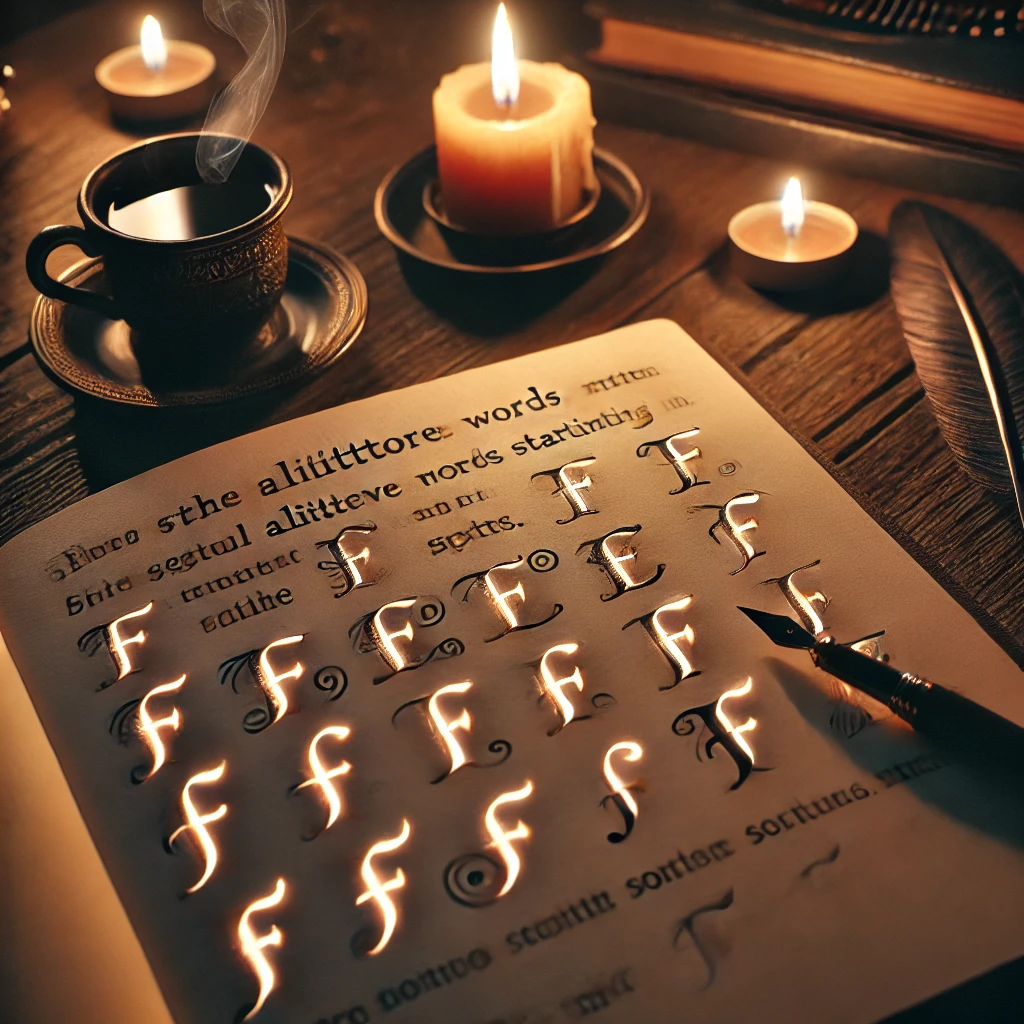
(AI Generated)
Poets have long used alliteration with the letter F to create flowing, rhythmic lines. The soft friction of repeated F sounds creates a breathy, almost whispered quality that can be either soothing or mysterious depending on context. Shakespeare was particularly fond of F-alliteration in his sonnets.
Literary characters whose names begin with F often embody complex dualities – think of Fitzgerald’s Jay Gatsby (whose real name was James Gatz), Dickens’ Fagin, or Faulkner’s Flem Snopes. There’s often something slightly ambiguous about these characters, reflecting the letter’s position between hard and soft sounds.
I dabble in poetry sometimes (mostly late at night when I can’t sleep and everything seems profound). One thing I’ve stumbled across is how useful F-sounds are for controlling the rhythm. They create these natural little speed bumps in a line. You have to slow down just a bit to say them, which lets you manipulate how the whole piece flows. Here’s an embarrassingly overwrought line I wrote at 2 AM last summer: “Fading fireflies flash faintly in forgotten fields.” Go ahead, try reading it out loud – you’ll feel how those F’s force you to slow down. It’s like verbal punctuation. My poetry workshop group teases me about my “F obsession,” but hey, whatever works, right?
F in Music and Art
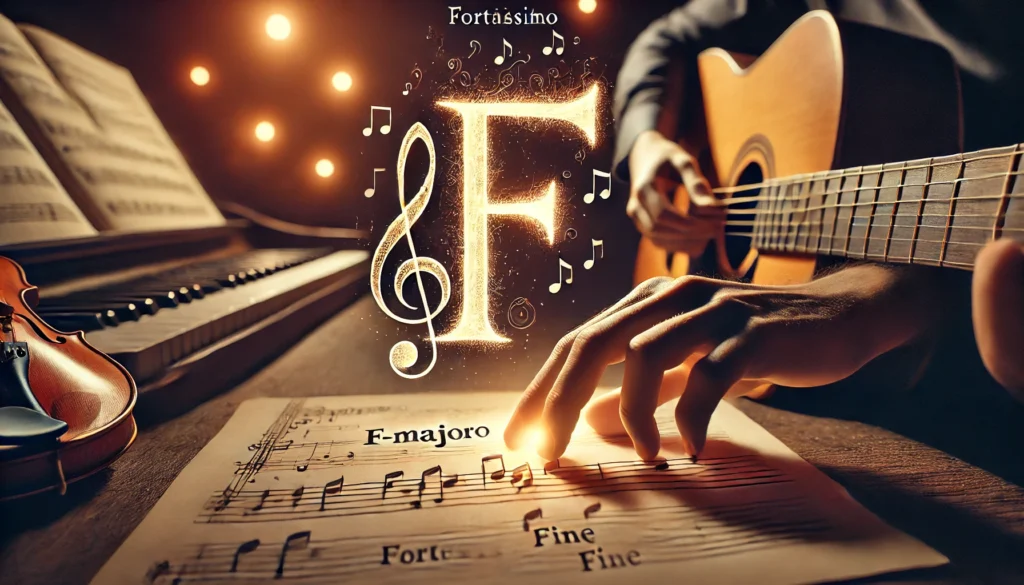
(AI Generated)
Musicians organize their world around the letter F – from the F-key, F-chord, fortissimo (very loud), to fine (end). The musical note F sits perfectly in the middle of the standard scale, another reflection of balance and harmony.
Visual artists often incorporate F-shapes into their compositions – sometimes overtly as in typography-based art, and sometimes subtly through diagonal and horizontal intersections. The shape naturally creates interesting negative space and draws the eye across a composition.
I recently attended an exhibition where an artist had created an entire series based on the shapes of different letters. The F-pieces were among the most dynamic, using the letter’s natural asymmetry to create movement across the canvas.
The Future of Letter F: Evolving Meanings
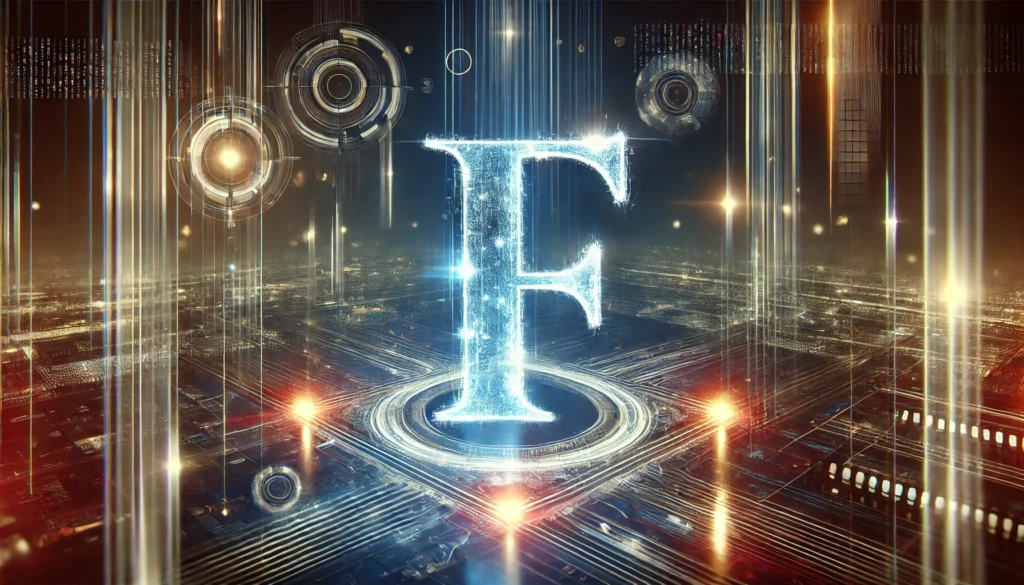
(AI Generated)
As language evolves, so too does the significance of individual letters. OK, so this letter has gotten a totally weird second life in internet culture lately. Do you know that “press F to pay respects” thing from that Call of Duty game? It blew up WAY beyond gaming. Now people just drop an “F in the chat whenever something goes wrong. Is your team losing? F. Dropped your phone? F. Got rejected for a job? Big F. It’s basically become the universal symbol for “well that sucks” online.
Marketing people have definitely caught on to the F magic, too. Just look at how many brands and slogans hammer you with words like “fresh,” “fast,” and “fantastic.” It’s not random – these companies pay big bucks to psychology experts who tell them F-words grab our attention and stick in our brains better.
From what I’ve read, language nerds think F isn’t going anywhere anytime soon. It’s got this distinctive sound that cuts through noise, and the shape is super recognizable. As long as humans keep talking and typing, F is going to keep doing its thing. Though I wonder what new meanings internet culture will cook up for it next year – the evolution is wild to watch!
I wonder sometimes about how letters will evolve in our increasingly digital world. Will the distinctive shape of F translate into new communication forms like emoji or simplified symbols? Or will its ancient connections to truth, balance, and harmony find renewed meaning in our complex modern lives?
The Phonetic Fingerprint of F

(AI Generated)
So my friend works at this tech company doing voice recognition stuff, and she told me something cool – the F sound has this super distinctive audio pattern that makes it easy for their algorithms to spot. It’s like a unique fingerprint in the sound wave. When they’re programming their systems to understand different accents and languages, F is one of their “reliable constants” because it barely changes.
The language geeks have a special symbol for it in their fancy International Phonetic Alphabet – it’s just /f/. And get this – while most sounds get all twisted and mangled when you hop between languages (try saying the Spanish “ñ” or German “ö” if you’re an English speaker), the letter F sound stays basically the same whether you’re speaking Japanese, Arabic, or English. It’s like the universal constant of mouth sounds. Bet you never thought the humble F was such a global superstar, huh?
What I find particularly interesting is how children acquire the letter F sound at a relatively early stage of language development. Most can produce it correctly by age 3-4, unlike more complex sounds like “th” or “r,” which may take years longer to master. There’s something fundamentally accessible about the mouth position required for F.
F in Fashion and Design

(AI Generated)
The clean lines of F make it a favorite in design fields. Fashion brands like Fendi, Ferragamo, and Furla leverage their visual appeal in their logos. The letter’s shape allows for endless creative interpretations while remaining recognizable – a designer’s dream.
Architects sometimes incorporate F-inspired structures into their buildings, especially in support beams and decorative elements. The letter’s natural combination of vertical stability and horizontal reach creates both visual interest and structural strength.
I noticed this architectural influence while touring modern buildings in Scandinavia last year. The guide pointed out how many contemporary structures incorporate shapes reminiscent of ancient runes, including the F-like Fehu rune. These design choices create subtle connections to cultural heritage while serving practical functions.
Exploring F Through Statistical Analysis
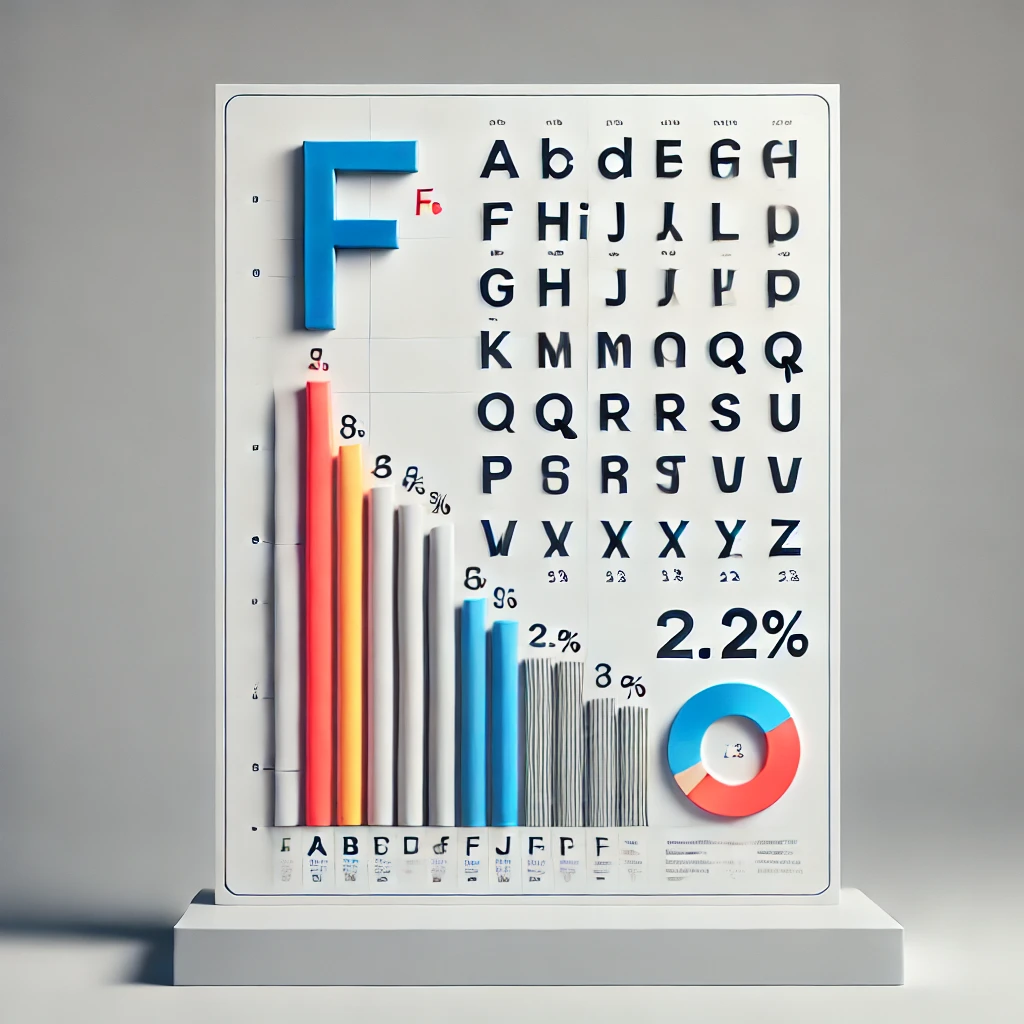
(AI Generated)
Linguists have conducted fascinating research on letter frequency across languages. In English, F ranks 13th in overall frequency, appearing in approximately 2.2% of written text. This relatively low frequency might contribute to its distinctiveness when it does appear.
Interestingly, F occurs more frequently at the beginning of words than in middle or end positions. This pattern differs from many other consonants and may explain why F makes such a strong impression on readers and listeners.
When analyzing the most common words in English, only a handful of high-frequency terms begin with F: from, for, first, find, and few lead the list. Yet despite this relative rarity, F-words often carry significant meaning in sentences, functioning as essential connectors and qualifiers.
F in the Corporate World: Branding and Identity
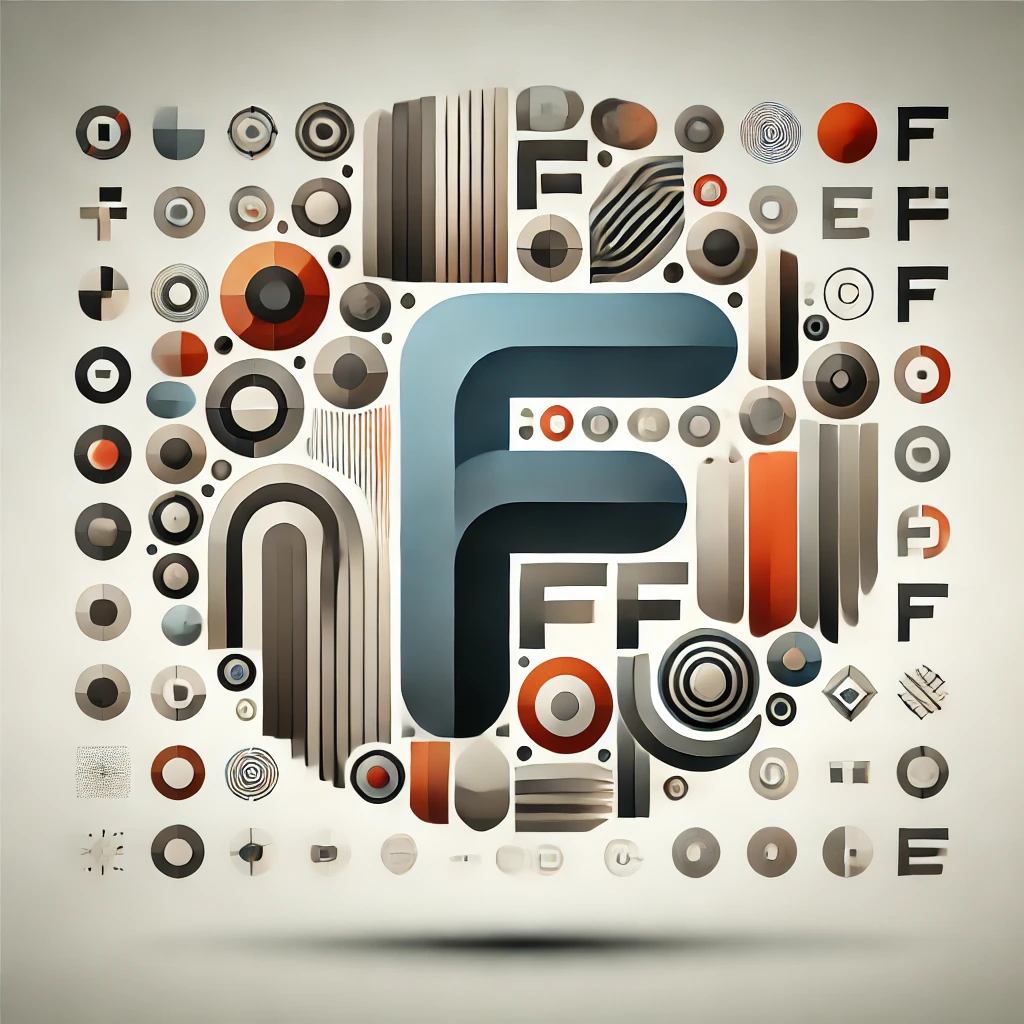
(AI Generated)
Beyond the tech companies mentioned earlier, F features prominently in corporate branding across sectors. Financial institutions particularly favor it – Fidelity, Fannie Mae, First National, and countless regional banks incorporate F into their identities.
The letter conveys attributes many businesses want to be associated with: forward-thinking, fast, friendly, and focused. Logo designers often emphasize these qualities through typography choices that highlight F’s distinctive shape.
I’ve worked with marketing teams who specifically requested brand names beginning with the letter F based on consumer perception research. Their studies suggested that customers perceive letter F-branded companies as more innovative and responsive than those using other initial letters.
Words That Begin With Letter F
F moves like breath — fluid, fierce, and free. These F-words carry flow and focus:
- Freelancing – Working independently and remotely, on your own terms. Get started
- Funnels – Marketing systems that guide visitors toward action. What is a funnel?
- Focus – The silent power behind deep work and mastery. Science of focus
Conclusion: The Unforgettable F
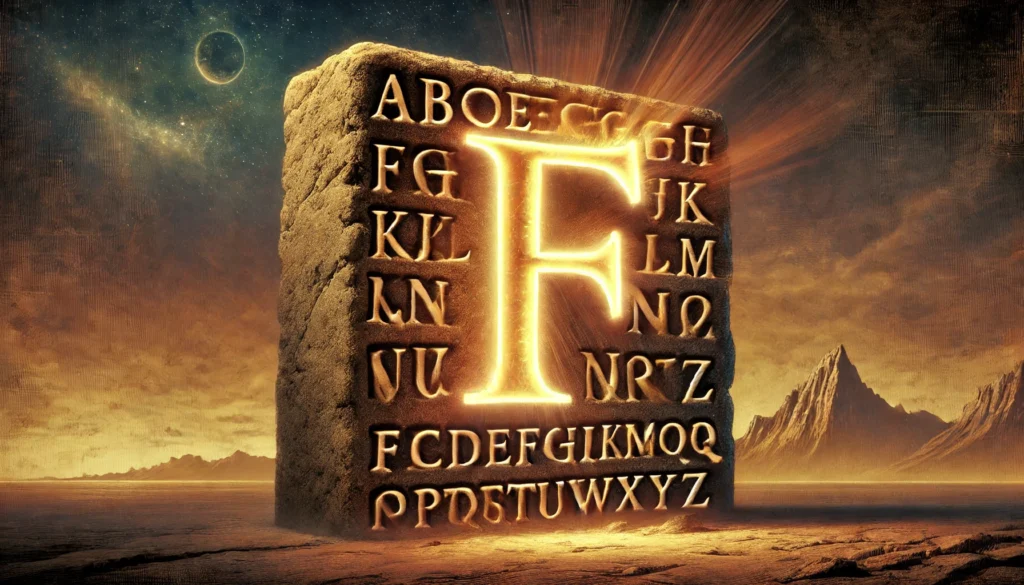
(AI Generated)
As we’ve explored throughout this journey, the letter F carries remarkable significance across history, language, culture, and psychology. From its ancient origins to its modern applications, this seemingly simple character contains multitudes of meanings.
Whether viewed through the lens of linguistics, symbolism, design, or digital communication, letter F continues to fascinate and influence. Its connections to truth, balance, and forward movement remain relevant thousands of years after its first appearance in written language.
The next time you encounter this ubiquitous letter–in words, signs, brand names, or creative works, perhaps you’ll pause to appreciate its rich heritage and ongoing evolution. In the grand alphabet of human expression, letter F truly deserves its prominent place.
What draws me to linguistic exploration is precisely this kind of discovery – finding profound depths in everyday elements we typically overlook. The letter F reminds us that meaning exists at every level of communication, from individual letters to complex philosophical concepts.
Continue Your Alphabet Journey
Explore More Letters:
A | B | C | D | E | F | G | H | I | J | K | L | M | N | O | P | Q | R | S | T | U | V | W | X | Y | Z
Share this article:
Did you enjoy learning about the letter F? Share your thoughts in the comments below or spread the knowledge by sharing this article with fellow language enthusiasts!
